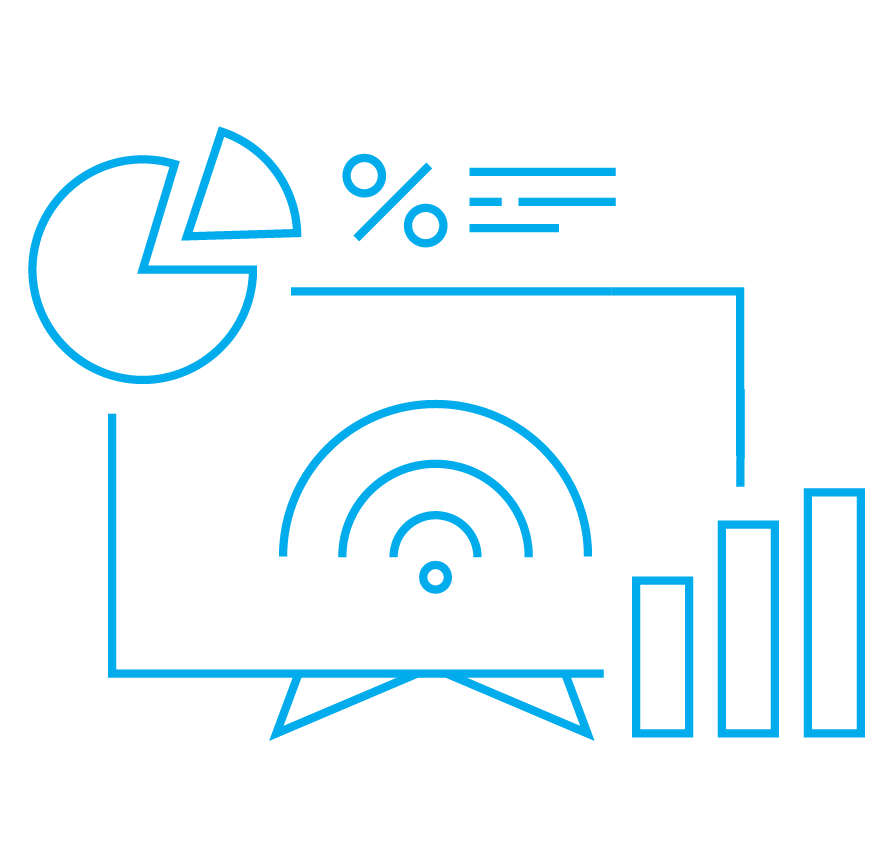- 1. Data Transparency and Data Privacy
- 4. Hyper-Targeted Advertising
- Conclusion
[scrollHeadline headlines=”data-transparency-privacy,post-cookies,in-house,hyper-target,mobile-ad-data,big-data-content-marketing” titles=”Data Transparency and Data Privacy,Post-cookies environment and users’ identifying,Building in-house programmatic team,Hyper-Targeted Advertising,Mobile Advertising and Mobile Data,Big Data Content Marketing”]
2020 is just around the corner. While you’re drawing up a list of your new year resolutions, the market sets the marketing trends that will be the most profitable and popular among the market members. For the sake of competitive behavior, you have to stay current about the technologies and introduced regulations related to you. It’s also important to know what the market proposes and not reinvent the wheel but to use already existing technology and adapt it to your business needs. This is the most powerful business strategy.
We have listed 6 prospective marketing trends. Those are the most up-to-date tendencies that will have a significant place in the market next year. Some of them are getting stronger, compared with the previous year, and take leading positions. Some of them are coming as a new tricky addition – we will explain them shortly.
1. Data Transparency and Data Privacy
Reliable data that comes from a trustworthy source precisely analyzed and respectively processed is a foundation of any marketing strategy, including a campaign that was built within the programmatic model. Next year will be associated with data transparency and privacy, continuing the tendencies from 2018 when GDPR was introduced and 2019 when the market was getting used to the new restrictions.
Global Data Protection Regulation (GDPR), which sets the limits for users’ data use, was introduced more than a year ago. Despite the obstacle, the programmatic market is still growing. AdWeek reports that programmatic ad spend in Europe had raised by 33% last year and reached $18.4 bn, even though data transparency is still a questionable matter.
Data transparency will remain a dubious topic for the next year too, after the California Privacy Law (CCPA) introduction. Comparing with GDPR, American law will have the narrower scope but will impose trade barriers for the market members. The businesses must meet 3 requirements to be obligated to conform to new privacy regulations, which are:
- gross annual revenue of the company is more than $25 million,
- the organization receives, shares, or sells personal information of more than 50,000 individuals,
- the company earns 50% or more of its annual revenue from selling personal information of California residents.
A couple of explanation words what CCPA does: it allows users to request information from companies about what their data is using and selling for. If the users don’t like what they see or hear, they can withdraw their permission anytime. So the companies have to put a “Do Not Sell My Data” button on their home page.
Want to know more? Check our article, dedicated to the subject of California Privacy Law in advertising.
There are plenty of proposed solutions by the market members that can help to deal with the given conditions and increase data transparency. For example, Transparency Consent Framework (TCF), created by IAB or CCPA compliance specs introduced also by IAB. The TCF provides transparency to consumers about how, and by whom, their personal data is processed. Moreover, the TCF enables vendors engaged in programmatic advertising to know ahead of time whether their own and/or their partners’ transparency and consent status allow them to lawfully process personal data for online advertising and related purposes.
2. Post-cookies environment and users’ identifying
This is one of the important topics that continues from the last year, as some of the major browsers disabled 3rd party cookies. This situation created misunderstandings among the advertising market members, as many of them are not sure what exactly is the difference between 3rd party cookies and 3rd party data. We checked the facts and cleared questionable points about the differences between these two terms. Learn more from our blog about the differences between 3rd party cookies and 3rd party data.
Originally, a cookie was served to customize a website in terms of user preferences, but not to track and target users with personalized ads. The advertising industry adapted this file since it was the most suitable tool for ad purposes. So now, according to the IAB, 71% of consumers prefer ads to be targeted to their interests and shopping habits, and 3 out of 4 consumers prefer fewer, but more personalized ads. It confirms that users want the benefits of cookies use in the online environment.
So the question about how the marketers can reach their target audience with the message remains open. AdTech companies propose the cookie replacements that would serve a tracking function along with users’ privacy being kept. As an example, IAB Tech Lab proposes a universal ID that will help to observe users’ browser behavior and identify among them a user that belongs to the target group. The privacy of the user’s data will be preserved.
To sum up this short point, we need to focus on collecting the data about internet users and identifying them with respect to their online privacy. Finding the best, universal ID for users will be a strong trend in the following years.
3. Building in-house programmatic team
According to IAB research, 40% of all programmatic campaigns are running in-house now and this trend will be growing next year. Even now it’s a pretty high percent for quite new technology. An idea of having an internal programmatic department within a company is based on using data about the potential and current clients. In a long term perspective – companies are looking for savings. In-house campaigns can be cheaper if you have an experienced team.
There is an alternative way to run programmatic campaigns. You can cooperate with the agency by outsourcing work to the experts, though the in-housing is definitely a strong trend this year and many global companies decided to run programmatic campaigns on their own. According to The Drum, 47.6% of marketers confirm that the companies from the financial field will bring marketing work in-house by 2020 year. This confirms the universality of programmatic advertising solutions.
Having the in-house programmatic team might be more difficult but it leads to saving the media and advertising budget. Also, it’s a secure approach in terms of data transparency, because all the resources that the company needs for a successful campaign are literally in house. This brings to having high-quality data with exclusive rights and can lead to better protection of data (data leaks or misuses).
Learn more about building in-house programmatic team – read our article.
4. Hyper-Targeted Advertising
Obviously, next year will be focused on data and its use in advertising targeting campaigns. Adlucent reports that 75% of customers prefer fewer ads but tailored to their current intentions and interests. The customers admit that the best advantages of personalized ads are:
- reducing inappropriate ads (46%)
- discovering new products (25%)
- faster searching and shopping (19%)
It’s a huge potential for hyper-targeting advertising here. Together with upcoming restrictions, the marketers also meet a challenge on how to recognize their target users among all the rest of internet users. Correct recognition leads to the most tailored ad. So looking for new sources of data that can be used for better targeting, will be a significant trend in the coming year.
What will be the new sources of data? Of course, marketers will still use high-quality audience data delivered via global DSPs and verified by standards such as Nielsen DAR. But if they want to gather new and not modeled data, they will look at raw data.
Raw data provided as a Data Stream delivers detailed information about user browser behavior with a timestamp of the taken events. It helps to better know users’ behavior, create more personalized ads, build own big data tools and save media budget by detecting non-human traffic.
5. Mobile Advertising and Mobile Data
Mobile rocks this year as well as will be rocking the next one. Retail Dive reports that smartphones brought 41.2% of all e-commerce revenue during the latest Black Friday in the US. It’s 22.2% more than last year. So, the research companies do have a strong base for predictions that the mobile advertising market will be growing in 2020.
Together with mobile advertising, mobile data efficiency is growing too. In 2019, mobile ad spend reached $190 bn worldwide and it expects to exceed $280 bn by 2022, Statista says. Besides the regular demographic characteristics, interests, and intentions, mobile data includes the actual user’s location. It’s super helpful to reach your target audience in any place on earth, literally. This is the biggest benefit of mobile advertising because you can’t achieve the same reach from your desktop ads version.
6. Big Data Content Marketing
Another trend that will have a big break next year – is Content Marketing driven by big data analysis. 86% of buyers start their purchasing journey from a query, not related to any brand. Also, 11,4 is an average number of contents about a product, which customers use before they decide to buy it. It means that users need more engaging content, related to the product they find interesting. It’s a thing for content marketing.
Content marketing will be a significant part of companies’ digital strategies next year, as it is based on creating and distributing attractive ad content, based on SEO-standards. This year over 80% of marketers increased their budgets in content marketing or declared that spendings stayed on the same level, according to Content Institute Marketing. In 2020 this trend will continue.
Content marketing is a big trend now and supported with the big data analysis will be efficient and highly measurable. Big Data solutions help to find the user profile, who actually needs to see that kind of content, as well as its context. With strong data analysis, marketers are able to check the profiles of readers. They can include certain profiles in a retargeting campaign after inspecting their customer journey. Thanks to such analysis, marketers see which users that had read the marketing article, also visited a promoted product website. And, of course, big data analysis of user profiles will help to create even more personalized and better-performing ads.
For companies that are going to try Big Data Content Marketing a very useful could be Data Management Platforms that offer to collect, manage, analyze and activate all data. As the data analysis field is growing, it’s super useful to have a system where marketers can organize data, integrate it with different external platforms and instantly generate a report with up-to-date statistics of target group or campaign.
Conclusion
There will be some major challenges for the digital advertising market next year. As we mentioned, data privacy, transparency and identification of online users will be hot topics for marketers across the world. Technology will help advertisers meet new requirements. That is why it’s dominating the list of digital marketing trends for 2020.
How will the future of digital advertising look like? It’s hard to create detailed visions but we can expect that programmatic, high-quality audience data and adtech that helps to protect privacy, will be in the area of online marketers’ interests worldwide.
Now, being armed with knowledge a little bit about the future you are able to build better strategies for your marketing actions. Feed your everyday decisions with strong “data arguments” that will definitely bring your revenue to the highest bar.



